Losing a limb can change a person’s life in many ways. Whether due to an accident, illness, or a medical condition, finding the right prosthetic is an important step toward regaining independence. Today, people have two main options: traditional prosthetics, which have been used for decades, and advanced bionic prosthetics, which use modern technology to improve movement and function.
Both types of prosthetics have their advantages and challenges. Some people prefer traditional prosthetics for their simplicity and durability, while others choose bionic limbs for their advanced features and natural movement. But which one is the right choice? Understanding the differences, benefits, and drawbacks of each can help make an informed decision.
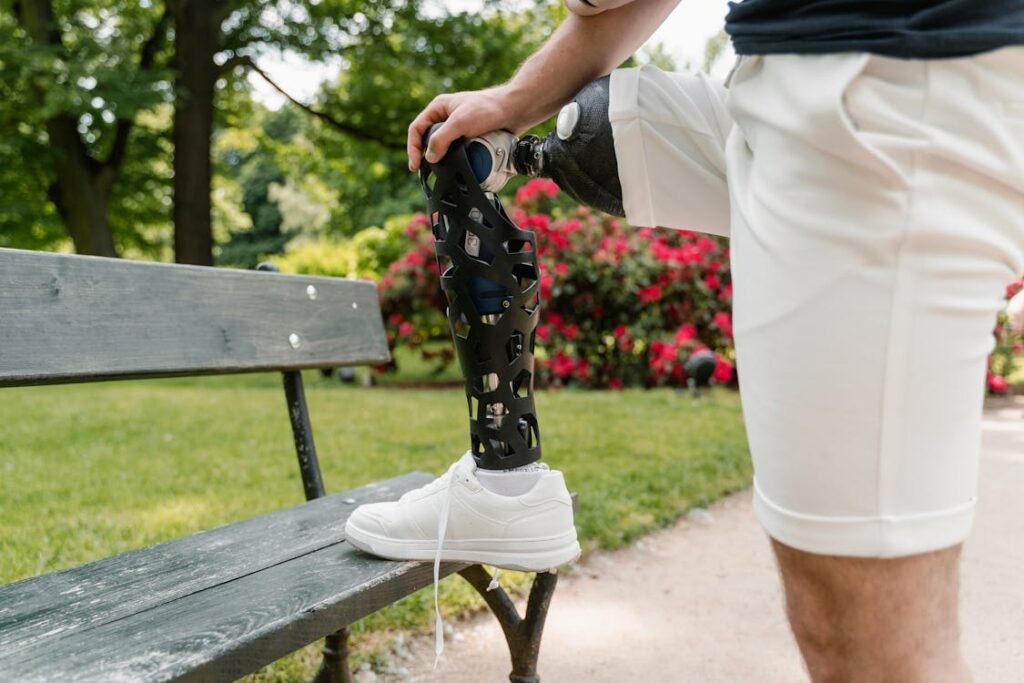
Understanding Traditional Prosthetics
Traditional prosthetics have been around for centuries and are designed to replace a missing limb with a functional substitute. These prosthetics do not use electronics or sensors; instead, they rely on mechanical structures and body movement to function.
They are commonly used for both upper and lower limb replacements and have been a reliable option for many people over the years.
A traditional prosthetic hand or arm may be either passive or body-powered. Passive prosthetics are primarily cosmetic, shaped to look like a real limb but without movement.
Body-powered prosthetics, on the other hand, are controlled using cables, harnesses, or straps that connect to other parts of the body. By moving their shoulders or other muscles, the user can open or close a hand or bend an elbow.
For lower limb replacements, traditional prosthetics usually consist of a socket, a mechanical joint, and a prosthetic foot. Some have basic hinges that allow bending at the knee, while more advanced mechanical models can provide smoother walking motion.
However, these do not adapt automatically to movement or terrain.
The Advantages of Traditional Prosthetics
One of the biggest benefits of traditional prosthetics is their durability. Since they do not contain electronics, they are less likely to break down due to technical failures.
This makes them a great choice for individuals who work in rugged environments or engage in activities that involve exposure to dirt, water, or rough handling.
Affordability is another major advantage. Traditional prosthetics tend to cost less than bionic ones, making them accessible to more people. Since they do not require batteries or software updates, maintenance is also simpler and more affordable in the long run.
Many users also appreciate the simplicity of traditional prosthetics. There is no need to charge them or learn how to control complex features.
Once a user adapts to a body-powered limb, it becomes a reliable extension of their body that they can use without worrying about technical malfunctions.
The Limitations of Traditional Prosthetics
Despite their benefits, traditional prosthetics come with certain limitations. One of the biggest challenges is that they require more effort to use.
Body-powered prosthetics depend on harnesses and cables, which can cause strain on the shoulders and back over time. Users may experience fatigue after prolonged use, especially if they need to perform repetitive tasks.
Another drawback is the limited range of movement. Traditional prosthetic hands often have a simple open-and-close function, making it difficult to perform tasks that require fine motor skills.
Similarly, mechanical prosthetic legs do not adjust to changes in walking speed or different types of terrain, which can make movement less natural.
Cosmetically, traditional prosthetics may not always look or feel lifelike. While some models are designed to resemble natural limbs, they do not provide the dynamic movement or responsiveness of a real arm or leg.
This can be a concern for individuals who want their prosthetic to closely mimic the appearance and function of a natural limb.
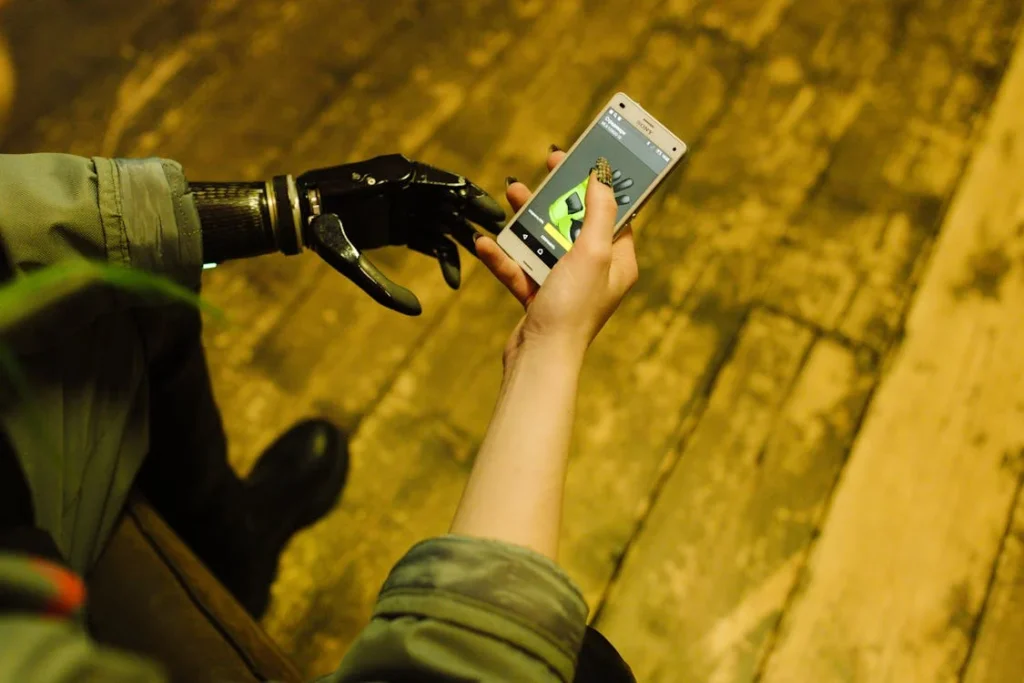
Understanding Bionic Prosthetics
Bionic prosthetics represent a major leap forward in technology, offering users a more natural and intuitive way to regain lost movement.
Unlike traditional prosthetics, which rely on body-powered mechanisms or simple mechanical joints, bionic limbs are designed with advanced sensors, microprocessors, and even artificial intelligence to enhance mobility and function.
These prosthetics aim to closely mimic real limbs, allowing users to perform tasks with greater ease and precision.
A bionic arm or hand typically operates using myoelectric sensors that detect electrical signals from the user’s muscles. When the user tries to move their missing limb, these sensors pick up the signals and translate them into movement in the prosthetic.
Some advanced bionic hands, such as Grippy™ by Robobionics, also feature multi-grip capabilities, allowing users to switch between different types of grips for various tasks.
Bionic legs, on the other hand, use microprocessors to adjust movement in real time. These prosthetics can adapt to different walking speeds and terrains, making movement feel smoother and more natural.
Some bionic knees and ankles even have motorized assistance, reducing the strain on the user’s body and making walking easier.
The Advantages of Bionic Prosthetics
One of the biggest benefits of bionic prosthetics is their ability to provide more natural movement. Since they respond to muscle signals or external controls, they feel more intuitive to use compared to traditional prosthetics.
This allows users to perform a wider range of activities, from holding small objects to walking on uneven terrain with greater stability.
Comfort is another key advantage. Traditional body-powered prosthetics require physical effort to operate, which can lead to muscle fatigue over time.
Bionic prosthetics, on the other hand, reduce strain by using motors and electronic controls to assist movement. This makes daily tasks less tiring and allows users to wear the prosthetic for longer periods without discomfort.
Bionic limbs also offer improved adaptability. Advanced models can adjust grip strength, walking patterns, or even provide sensory feedback to help users better interact with their environment.
For example, some bionic hands include touch sensors that allow users to feel the amount of pressure they are applying when holding an object. This reduces the chances of accidentally dropping or crushing something delicate.
The Limitations of Bionic Prosthetics
Despite their many advantages, bionic prosthetics do come with certain challenges. One of the biggest drawbacks is cost. Because these prosthetics use advanced technology, they tend to be more expensive than traditional models.
While the investment can be worthwhile for many users, affordability remains a barrier for some individuals.
Another challenge is maintenance. Unlike traditional prosthetics, which have simple mechanical parts, bionic limbs rely on electronic components that require regular upkeep.
Batteries need to be charged, sensors must be calibrated, and software updates may be necessary to keep the prosthetic functioning optimally. If a component malfunctions, repairs may take longer and require specialized assistance.
Learning to use a bionic prosthetic also requires time and practice. Since these limbs operate differently from natural limbs, users often need rehabilitation to get accustomed to controlling them effectively.
Fortunately, Robobionics offers home-based gamified rehabilitation programs to make the learning process more engaging and intuitive.
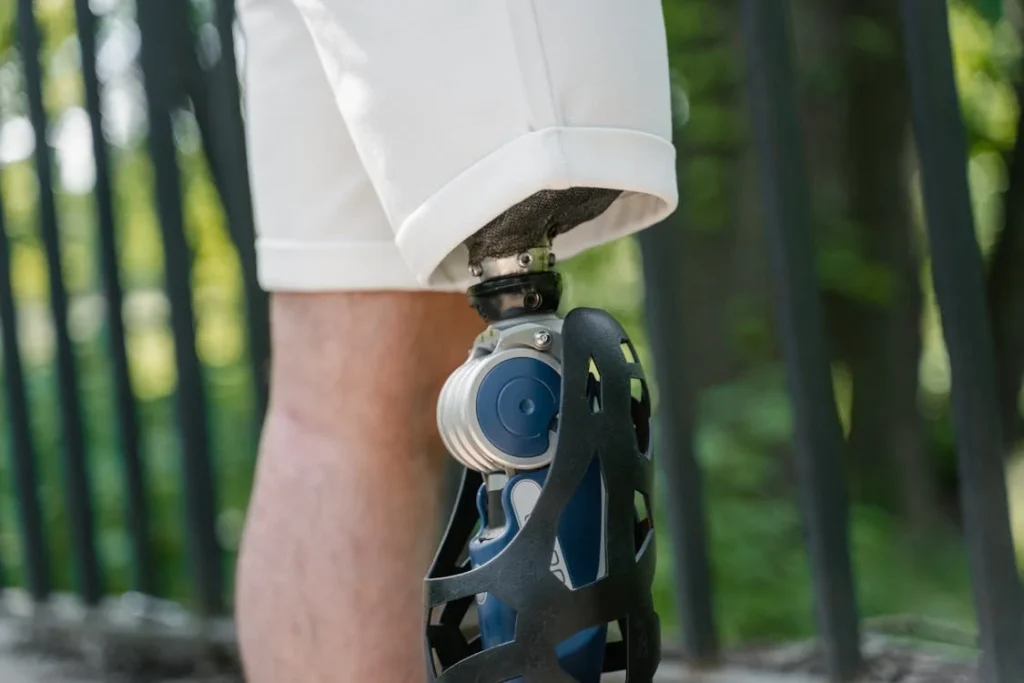
Comparing Bionic and Traditional Prosthetics: Which One is Right for You?
Choosing between a bionic and a traditional prosthetic is a highly personal decision. Each type has its own strengths and challenges, and the right choice depends on an individual’s lifestyle, goals, and budget.
While some people may prefer the simplicity of a traditional prosthetic, others may find that the advanced features of a bionic limb offer greater independence and ease of use.
Daily Functionality and Ease of Use
One of the most important factors to consider is how the prosthetic will be used in daily life. Traditional prosthetics, especially body-powered ones, require physical effort to operate.
Users rely on shoulder and arm movements to control an upper limb prosthetic, while mechanical lower limb prosthetics function based on manual adjustments and body movement.
While effective, this can sometimes feel unnatural and require additional energy, leading to fatigue over time.
Bionic prosthetics, on the other hand, are designed to move in a more intuitive way. Since they are controlled by muscle signals or external sensors, they allow for smoother, more precise movements.
A bionic hand, for example, can grip objects with different levels of pressure, allowing users to handle both heavy and delicate items. Similarly, a bionic leg with a microprocessor-controlled knee can adjust in real time, providing better balance and reducing strain on the body.
For individuals who need a prosthetic for basic tasks such as walking or holding objects, a traditional prosthetic may be a sufficient and cost-effective choice.
However, for those who want more control, flexibility, and comfort in their movements, a bionic prosthetic may be the better option.
Comfort and Wearability
A prosthetic should not only function well but also be comfortable to wear for extended periods. Traditional prosthetics, while durable, may cause discomfort due to their reliance on harnesses and manual controls.
The constant pressure from cables or the need for compensatory movements can lead to muscle strain, especially in body-powered prosthetic users.
Bionic prosthetics are generally more comfortable because they do not require as much physical exertion. Myoelectric sensors allow users to control the limb with minimal effort, and motorized components assist movement, reducing stress on the rest of the body.
Advanced socket designs and lightweight materials further enhance comfort, making it easier for users to wear their prosthetic all day.
Adaptability and Advanced Features
One area where bionic prosthetics significantly outperform traditional ones is adaptability. Traditional prosthetics offer basic functions such as opening and closing a hand or bending a knee, but they do not adjust dynamically to different situations.
A mechanical prosthetic knee, for instance, moves in a fixed way and does not adapt to changes in walking speed or incline.
Bionic limbs, however, come with intelligent features that improve usability. Many bionic hands have multiple grip patterns, allowing users to switch between different types of grips for different tasks.
Some bionic legs even have Bluetooth connectivity, enabling users to customize settings via a mobile app. These advanced features provide a level of personalization that traditional prosthetics cannot match.

Cost, Maintenance, and Long-Term Investment
When deciding between a bionic or traditional prosthetic, cost is often a major factor. While both types serve the same fundamental purpose—restoring mobility and function—their price points and long-term expenses can vary significantly.
Understanding the financial aspects of prosthetics can help users make an informed decision.
Upfront Costs and Affordability
Traditional prosthetics are generally more affordable than bionic ones. Because they use simple mechanical parts without electronic components, their manufacturing costs are lower.
For many people, this makes them a practical and budget-friendly option, especially if they do not require advanced movement capabilities.
Bionic prosthetics, on the other hand, are more expensive due to the technology involved. Sensors, microprocessors, and motorized joints all contribute to a higher price tag.
However, while the initial cost is higher, the benefits of improved movement, comfort, and adaptability often justify the investment for many users.
At Robobionics, we understand the importance of affordability. That’s why we’ve developed cost-effective bionic solutions like Grippy™, offering advanced functionality at a competitive price.
Our goal is to make high-quality bionic prosthetics more accessible to those who need them.
Maintenance and Repairs
Maintenance is another key difference between traditional and bionic prosthetics. Traditional prosthetics, being mechanical, require fewer repairs and can often be serviced easily.
Their durability makes them a good choice for individuals who need a low-maintenance solution, particularly in areas where access to prosthetic care may be limited.
Bionic prosthetics, however, require more upkeep. Because they rely on electronic components, they need regular charging, occasional software updates, and calibration to ensure sensors and motors function correctly.
If a component malfunctions, repairs may take longer and require specialized technicians. That’s why Robobionics offers local servicing and technical support, ensuring that our users receive fast and efficient maintenance when needed.
Long-Term Value and Quality of Life
While traditional prosthetics may have a lower upfront cost, they may not always be the most cost-effective in the long run. Mechanical prosthetics can require replacements and adjustments over time, which can add up in expenses.
Additionally, their limited functionality may lead some users to eventually seek a bionic upgrade.
Bionic prosthetics, while initially more expensive, often provide long-term value by improving the user’s overall quality of life.
The ability to move naturally, perform everyday tasks more easily, and reduce physical strain can make a huge difference in independence and well-being. For many, this makes the investment in a bionic limb worthwhile.
Ultimately, the right choice depends on individual needs and financial considerations. If affordability and durability are top priorities, a traditional prosthetic may be the best option.
However, if advanced movement, comfort, and long-term benefits are important, a bionic prosthetic can be a life-changing solution.
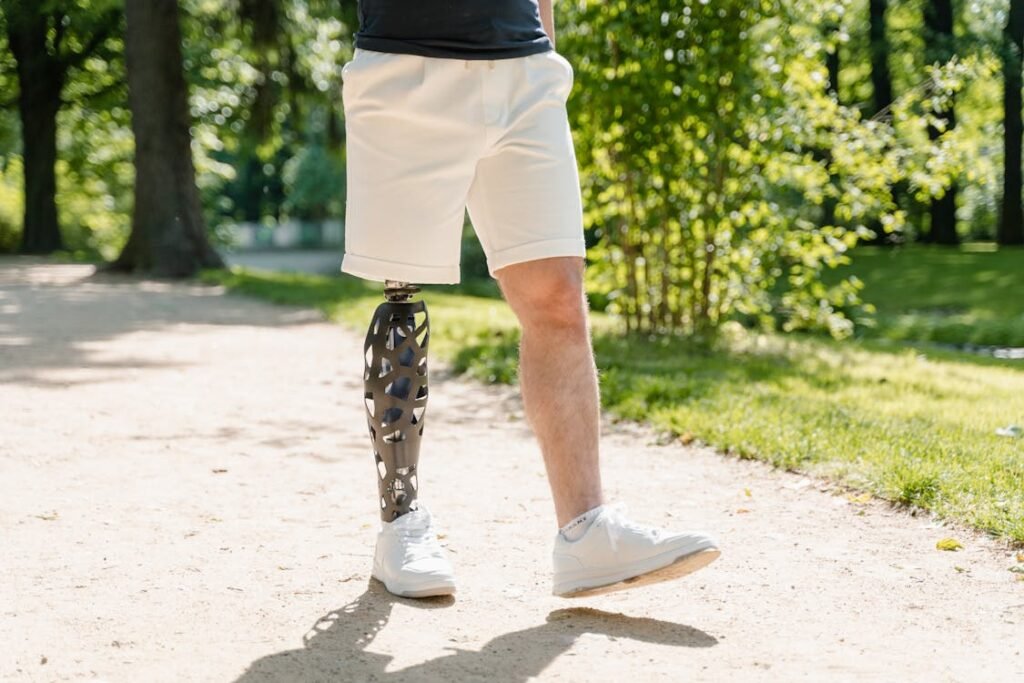
Psychological and Emotional Impact
Choosing a prosthetic is not just about physical function—it is also about emotional well-being, confidence, and self-identity. The way a person feels about their prosthetic limb plays a major role in their overall quality of life.
Both traditional and bionic prosthetics can have a profound emotional impact, but the experience of using them differs in meaningful ways.
Confidence and Social Interactions
For many people, the appearance and functionality of a prosthetic limb affect their confidence in social situations. Traditional prosthetics, while effective, often have a limited range of motion and can appear less lifelike.
Some users may feel self-conscious about their prosthetic’s mechanical nature, especially if they struggle with complex movements like grasping small objects or walking smoothly.
Bionic prosthetics, with their advanced control systems and natural-looking movements, can help users feel more comfortable in public.
A bionic hand that can mimic real hand movements allows for natural gestures, making interactions like handshakes and waving feel more fluid. A bionic leg that adjusts to walking speed and terrain makes movement feel effortless, reducing anxiety about balance or falling.
Some users embrace the robotic look of a bionic limb as a sign of strength and resilience. Modern designs make bionic limbs look sleek and futuristic, and many users take pride in their high-tech appearance.
Others may prefer a more natural-looking option, which is why many bionic prosthetics come with cosmetic covers that resemble real skin.
Emotional Adjustment and Mental Health
Adjusting to a prosthetic limb is an emotional journey. Some individuals experience frustration in the beginning as they learn to use their new limb, whether it is traditional or bionic.
The learning curve can be steep, especially for those using a bionic prosthetic for the first time. However, with practice and rehabilitation, movements become smoother and more intuitive.
One of the biggest psychological benefits of bionic prosthetics is the ability to regain independence. Many users who struggled with simple tasks before getting a bionic limb find that they can now perform them with ease.
The ability to grip objects naturally, walk without strain, or feel in control of daily activities leads to increased self-esteem and emotional well-being.
At Robobionics, we understand the importance of emotional support during the adaptation process. That is why we offer rehabilitation programs and expert guidance to help users transition to their new prosthetic confidently.
Our goal is not just to restore movement but to help individuals feel empowered and independent in their daily lives.
Personal Preference and Lifestyle
Ultimately, the decision between a traditional and a bionic prosthetic is deeply personal. Some people value simplicity, durability, and ease of use, making traditional prosthetics the best choice for them.
Others want the latest advancements in technology, improved movement, and customization, which makes bionic prosthetics the preferred option.
The most important thing is finding a prosthetic that feels right for the user—one that meets their needs, aligns with their lifestyle, and helps them feel confident and comfortable in their body.
Whether traditional or bionic, a well-fitted prosthetic can be a life-changing tool that restores independence and enhances overall happiness.
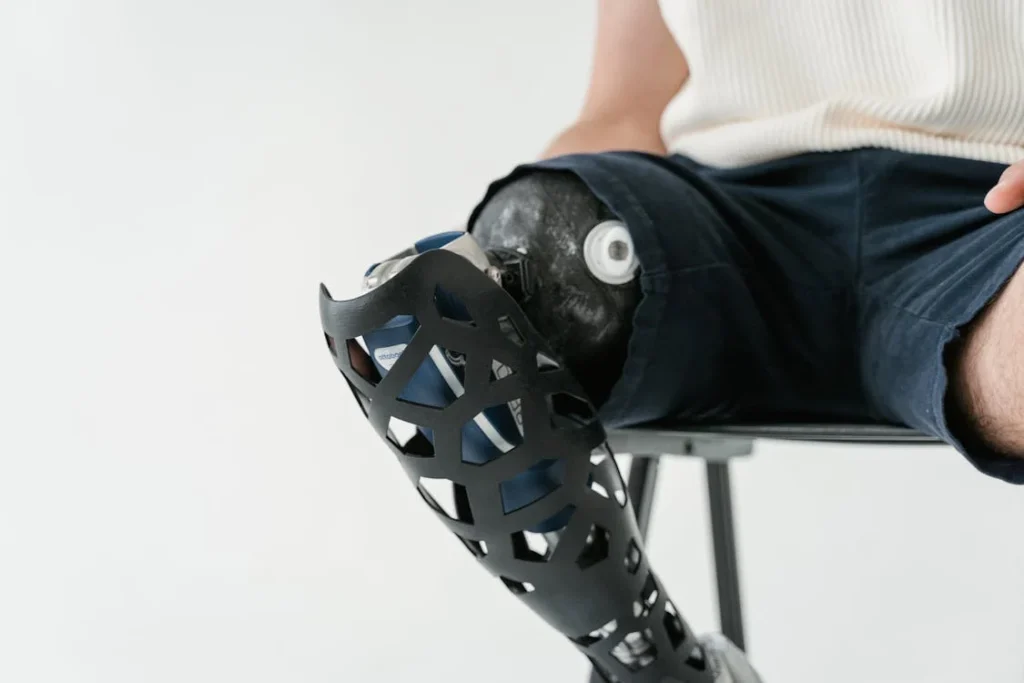
The Role of Rehabilitation in Maximizing Prosthetic Use
Regardless of whether a person chooses a traditional or bionic prosthetic, rehabilitation plays a crucial role in adapting to and mastering the use of the new limb.
A prosthetic is not just a tool—it becomes an extension of the body, and learning how to use it effectively requires patience, practice, and proper guidance.
Learning to Control a Prosthetic Limb
For traditional prosthetic users, rehabilitation focuses on building strength and coordination. Body-powered prosthetics require the user to develop control over shoulder or residual limb muscles to operate the prosthetic effectively.
Over time, movements become more fluid, but early stages may require significant effort to adjust.
For bionic prosthetic users, training involves learning how to send the right muscle signals to control movement.
Myoelectric prosthetics rely on small electrical signals generated by the muscles, and users must practice activating these muscles correctly. This process can take time, but once mastered, bionic limbs provide a much more natural experience.
To help with this process, Robobionics offers gamified home-based rehabilitation. By incorporating engaging exercises that simulate real-world tasks, users can strengthen their muscle control and fine-tune their movements in a fun and interactive way.
Improving Comfort and Fit
Rehabilitation is not just about movement—it is also about ensuring that the prosthetic fits comfortably and does not cause pain or discomfort. Traditional prosthetics, especially those that use harnesses or sockets, require adjustments over time to prevent pressure sores or irritation.
Bionic prosthetics, while designed for comfort, also require periodic calibration to ensure that the sensors and motors function correctly.
This is especially important for users who experience changes in muscle strength or residual limb size. Regular rehabilitation sessions help identify any issues with fit and make necessary adjustments.
Strengthening Muscles and Preventing Fatigue
Using a prosthetic limb requires the body to adapt, and this can sometimes lead to muscle fatigue, especially in the early stages. Traditional prosthetic users may experience strain in the shoulders or back due to the effort needed to control body-powered limbs.
Bionic users, while benefiting from motorized movement, still need to develop the right muscle patterns to send accurate signals to their prosthetic.
Rehabilitation programs include exercises that target these muscles, building endurance and reducing strain. Strengthening the residual limb and surrounding muscles ensures that the prosthetic can be used for extended periods without discomfort.
Emotional and Psychological Support
Adapting to a prosthetic limb is not just a physical challenge—it is also a mental and emotional journey. Some individuals may feel frustrated or discouraged when first learning to use their prosthetic.
Support from physical therapists, prosthetists, and even other prosthetic users can make a huge difference in boosting confidence.
At Robobionics, we emphasize the importance of emotional support throughout the rehabilitation process.
Our team is dedicated to helping users not only master their prosthetic but also build confidence in their abilities. The goal is to ensure that every user feels empowered and capable of living independently.
Conclusion
Choosing between a traditional and a bionic prosthetic is a deeply personal decision, influenced by lifestyle, budget, comfort, and individual goals. Traditional prosthetics offer reliability, affordability, and durability, making them a practical choice for those who prefer a simple, low-maintenance solution. On the other hand, bionic prosthetics provide advanced movement, intuitive control, and greater adaptability, enhancing independence and making daily tasks easier.
Regardless of the choice, proper rehabilitation and support are key to making the most of any prosthetic limb. Learning how to control, adjust, and integrate a prosthetic into daily life takes time, but with the right guidance, users can regain mobility and confidence. At Robobionics, we are committed to providing high-quality prosthetic solutions that are both functional and accessible.
If you are exploring prosthetic options and need expert advice, we invite you to book a free demo of Grippy™ and experience the benefits of bionic technology firsthand. Our team is here to help you find the perfect prosthetic solution, ensuring that you regain independence, comfort, and control over your life. Contact us today and take the first step toward a future without limits!



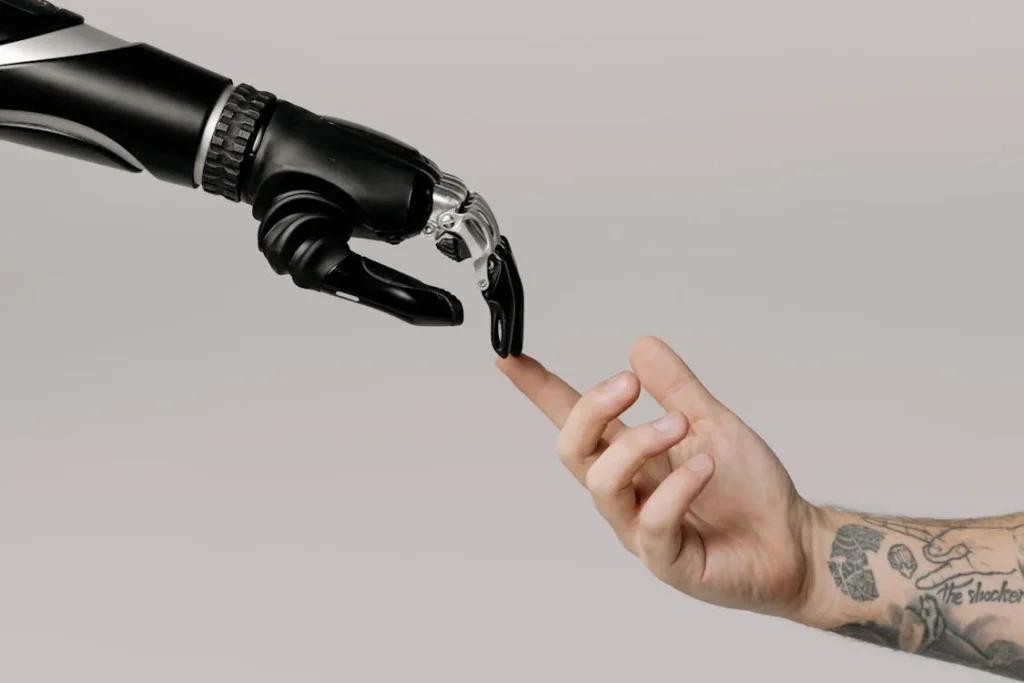
Pingback: The Pace of AI Innovation: What Entrepreneurs Need to Know - Designbeep
Pingback: Best Quality Prosthetics for Optimal Comfort & Function – Prosthetics Blog
Pingback: Bionic Prosthetics: Revolutionizing Lives with Technology – Prosthetics Blog